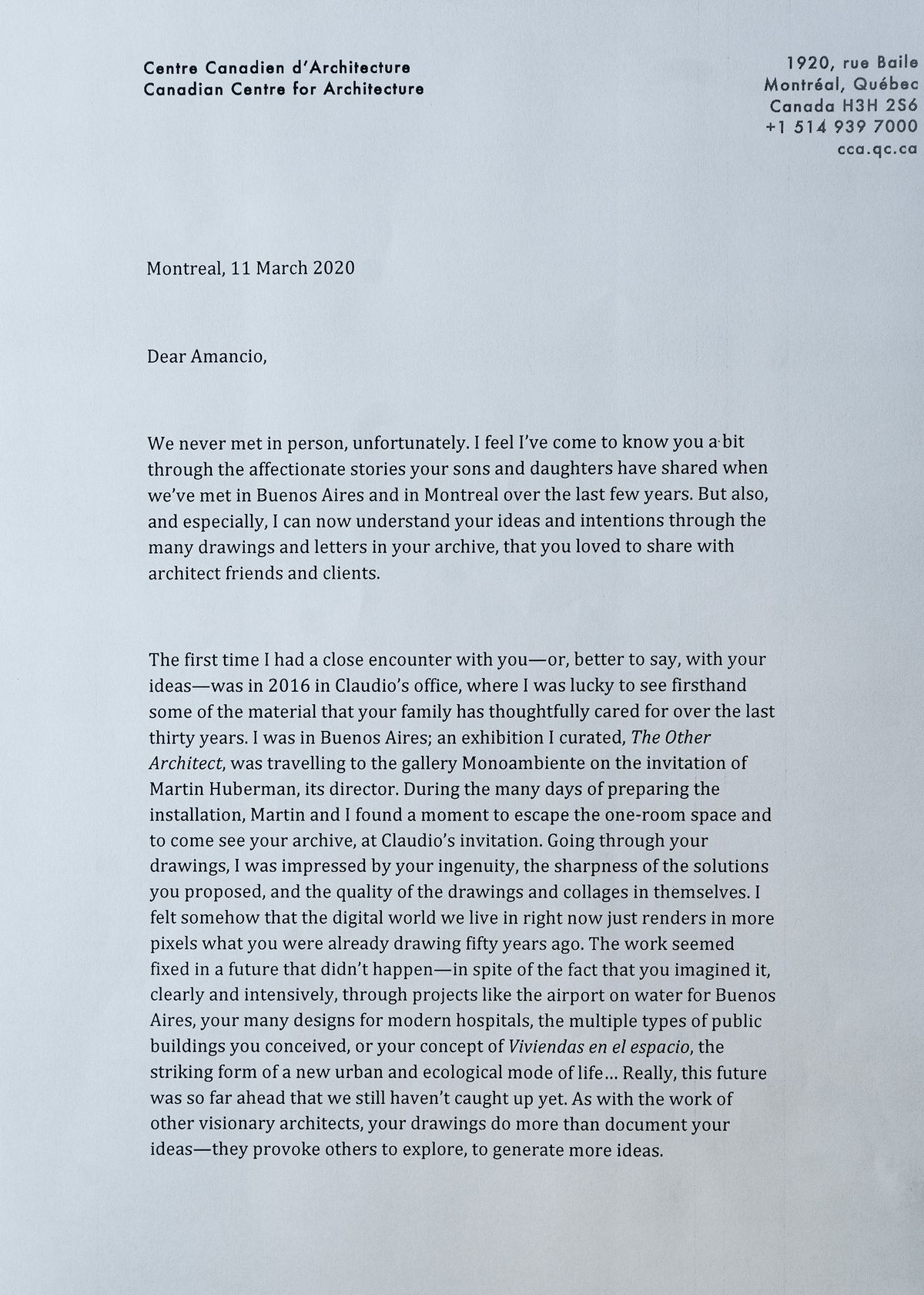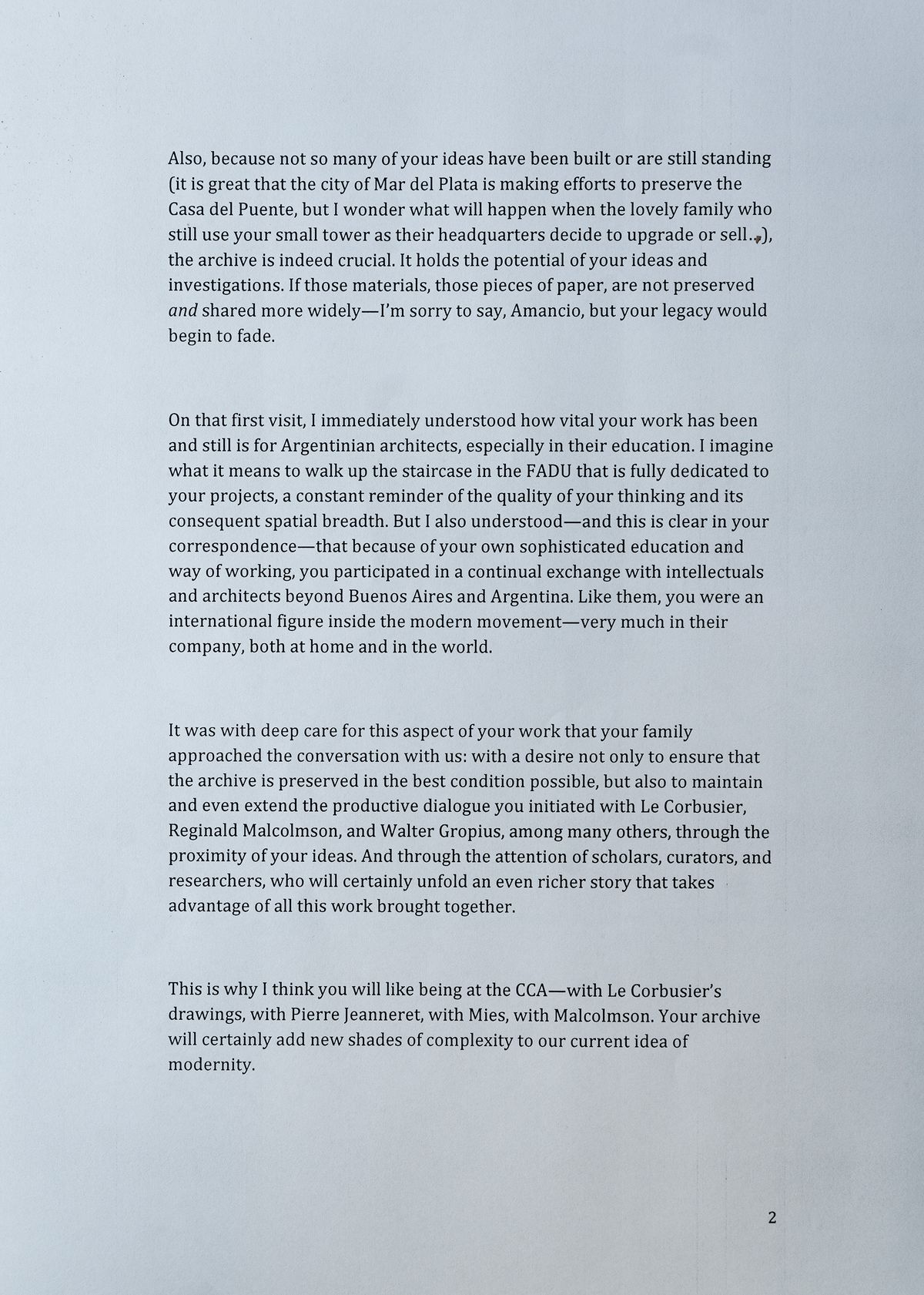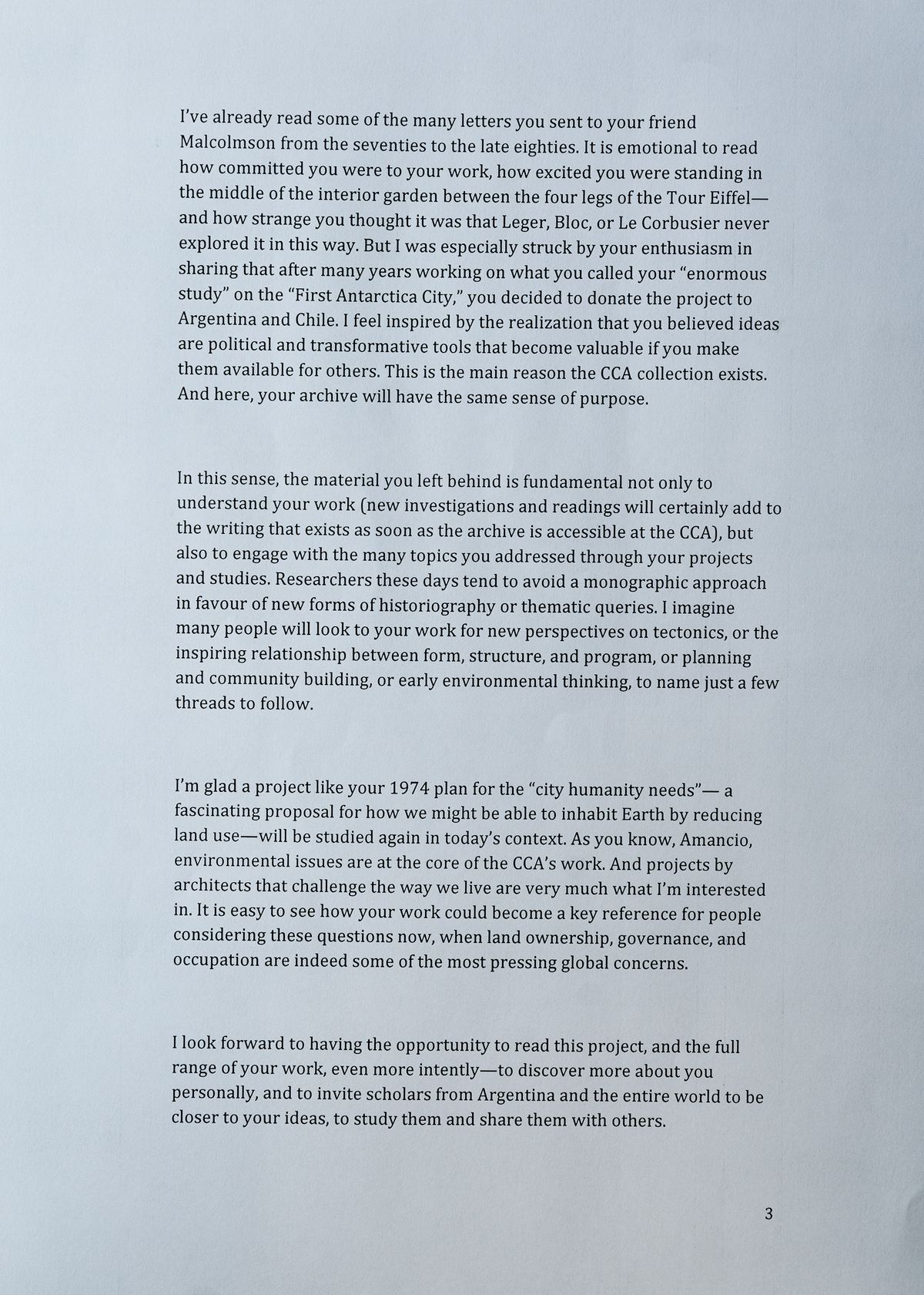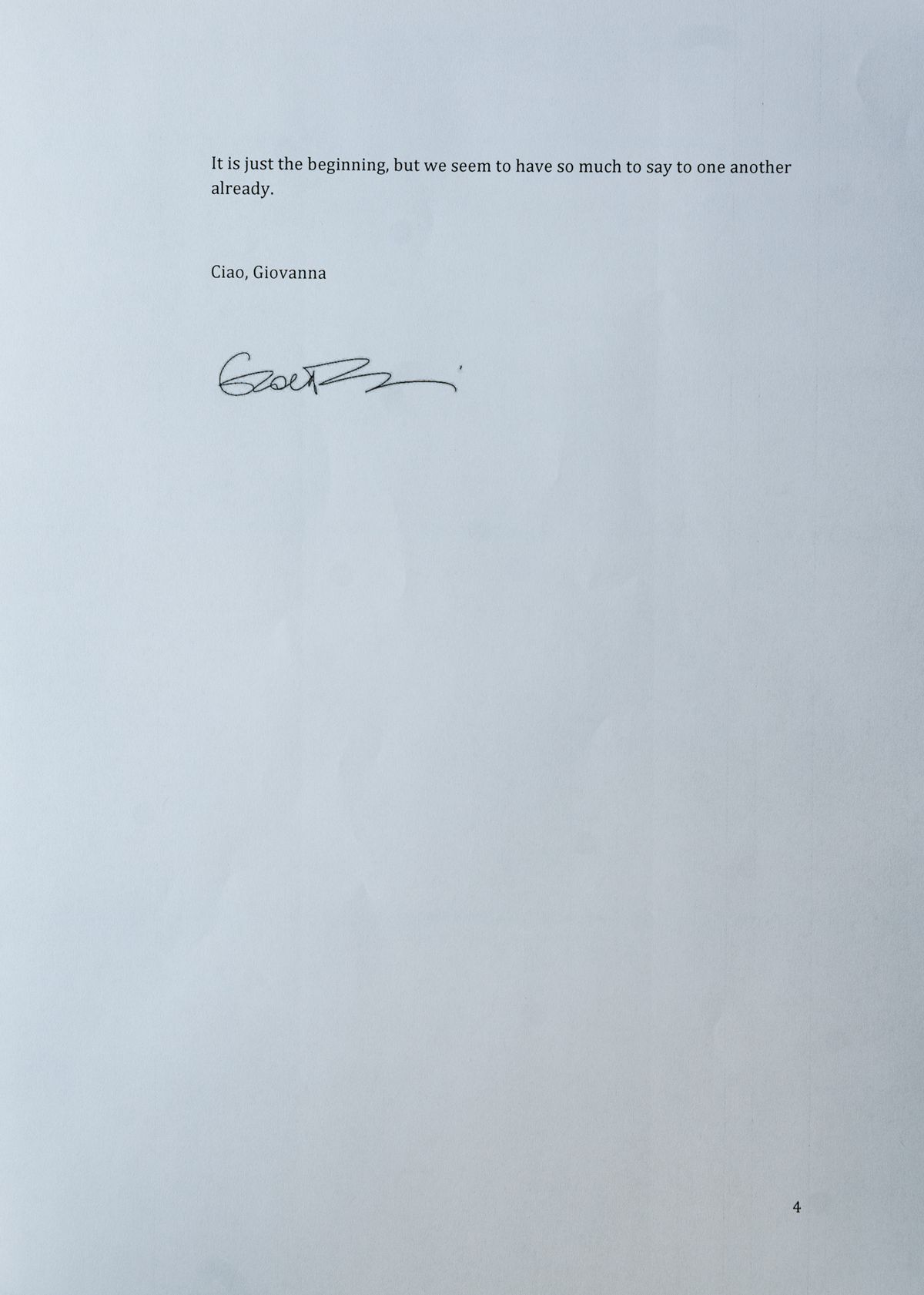We never met in person, unfortunately. I feel I’ve come to know you a bit through the affectionate stories your sons and daughters have shared when we’ve met in Buenos Aires and in Montréal over the last few years. But also, and especially, I can now understand your ideas and intentions through the many drawings and letters in your archive, that you loved to share with architect friends and clients.
The first time I had a close encounter with you—or, better to say, with your ideas—was in 2016 in Claudio’s office, where I was lucky to see firsthand some of the material that your family has thoughtfully cared for over the last thirty years. I was in Buenos Aires; an exhibition I curated, The Other Architect, was travelling to the gallery Monoambiente on the invitation of Martin Huberman, its director. During the many days of preparing the installation, Martin and I found a moment to escape the one-room space and to come see your archive, at Claudio’s invitation. Going through your drawings, I was impressed by your ingenuity, the sharpness of the solutions you proposed, and the quality of the drawings and collages in themselves. I felt somehow that the digital world we live in right now just renders in more pixels what you were already drawing fifty years ago. The work seemed fixed in a future that didn’t happen—in spite of the fact that you imagined it, clearly and intensively, through projects like the airport on water for Buenos Aires, your many designs for modern hospitals, the multiple types of public buildings you conceived, or your concept of viviendas en el espacio, the striking form of a new urban and ecological mode of life… Really, this future was so far ahead that we still haven’t caught up yet. As with the work of other visionary architects, your drawings do more than document your ideas—they provoke others to explore, to generate more ideas.
Also, because not so many of your ideas have been built or are still standing (it is great that the city of Mar del Plata is making efforts to preserve the Casa del Puente, but I wonder what will happen when the lovely family who still use your small tower as their headquarters decide to upgrade or sell…), the archive is indeed crucial. It holds the potential of your ideas and investigations. If those materials, those pieces of paper, are not preserved and shared more widely—I’m sorry to say, Amancio, but your legacy would begin to fade.
On that first visit, I immediately understood how vital your work has been and still is for Argentinian architects, especially in their education. I imagine what it means to walk up the staircase in the FADU that is fully dedicated to your projects, a constant reminder of the quality of your thinking and its consequent spatial breadth. But I also understood—and this is clear in your correspondence—that because of your own sophisticated education and way of working, you participated in a continual exchange with intellectuals and architects beyond Buenos Aires and Argentina. Like them, you were an international figure inside the modern movement—very much in their company, both at home and in the world.
It was with deep care for this aspect of your work that your family approached the conversation with us: with a desire not only to ensure that the archive is preserved in the best condition possible, and most importantly all together, but also to maintain and even extend the productive dialogue you initiated with Le Corbusier, Reginald Malcolmson, and Walter Gropius, among many others, through the proximity of your ideas. And through the attention of scholars, curators, and researchers, who will certainly unfold an even richer story that takes advantage of all this work brought together.
This is why I think you will like being at the CCA—with Le Corbusier’s drawings, with Pierre Jeanneret, with Mies, with Malcolmson. Your archive will certainly add new shades of complexity to our current idea of modernity.
I’ve already read some of the many letters you sent to your friend Malcolmson from the seventies to the late eighties. It is emotional to read how committed you were to your work, how excited you were standing in the middle of the interior garden between the four legs of the Tour Eiffel—and how strange you thought it was that Leger, Bloc, or Le Corbusier never explored it in this way. But I was especially struck by your enthusiasm in sharing that after many years working on what you called your “enormous study” on the “First Antarctica City,” you decided to donate the project to Argentina and Chile. I feel inspired by the realization that you believed ideas are political and transformative tools that become valuable if you make them available for others. This is the main reason the CCA collection exists. And here, your archive will have the same sense of purpose.
In this sense, the material you left behind is fundamental not only to understand your work (new investigations and readings will certainly add to the writing that exists as soon as the archive is accessible at the CCA) but also to engage with the many topics you addressed through your projects and studies. Researchers these days tend to avoid a monographic approach in favour of new forms of historiography or thematic queries. I imagine many people will look to your work for new perspectives on tectonics, or the inspiring relationship between form, structure, and program, or planning and community building, or early environmental thinking, to name just a few threads to follow.
I’m glad a project like your 1974 plan for the “city humanity needs”— a fascinating proposal for how we might be able to inhabit Earth by reducing land use—will be studied again in today’s context. As you know, Amancio, environmental issues are at the core of the CCA’s work. And projects by architects that challenge the way we live are very much what I’m interested in. It is easy to see how your work could become a key reference for people considering these questions now, when land ownership, governance, and occupation are indeed some of the most pressing global concerns.
I look forward to having the opportunity to read this project, and the full range of your work, even more intently—to discover more about you personally, and to invite scholars from Argentina and the entire world to be closer to your ideas, to study them and share them with others.
It is just the beginning, but we seem to have so much to say to one another already.
Ciao,
Giovanna
Montréal, 11 March 2020



